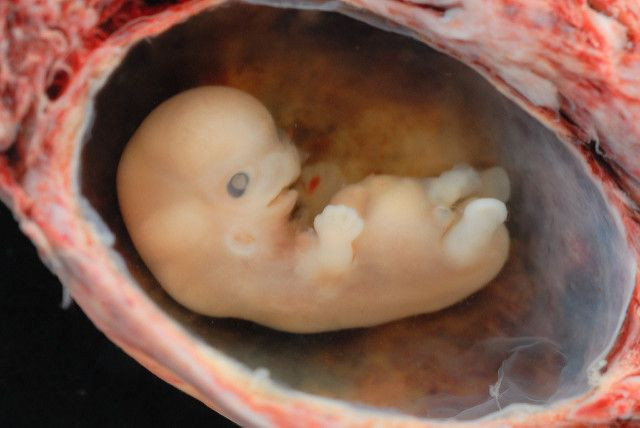3-Parent Babies: FDA Advisory Panel Says Mitochondrial Therapy Research Is Ethical If Limited To Boy Embryos

While it may sound like a future fantasy, three-parent babies have already been born here in the United States. In 1997, scientists at a New Jersey fertility clinic first used a surgical technique that produced embryos carrying genes from a father, a mother, and one additional woman — the donor of healthy mitochondrial DNA.
This in vitro fertilization technique, a form of mitochondrial therapy, amounts to sucking the cytoplasm out of the mother’s egg (the “ooplasm” contains the mitochondria and other organelles), and replacing it with healthy donor ooplasm. Since banned by the Food and Drug Administration, this technique enabled more than a few mothers, who might otherwise have passed on mitochondrial disease, to produce healthy babies.
Following years of restrictions, an FDA advisory report authored by the National Academy of Sciences, Engineering, and Medicine says conducting research of mitochondrial therapy procedures on humans is “ethically permissible” as long as several conditions are met. One of the suggested restrictions is likely to create a stir; the panel suggests initially limiting mitochondrial therapy research to male embryos. Those polled by Genetics Expert News Service argue that this stipulation is an appropriate measure of caution.
Why Not Girls?
Almost all the cells in our bodies have mitochondria, which perform as tiny batteries producing much needed energy. Mitochondria carry their own DNA and it is passed, intact, from mother to child through the egg. Sperm also carries its own mitochondria, but once it fuses with an egg to form an embryo, this masculine mitochondria withers and dies. Because each of us inherits our mtDNA from our mothers, who inherited hers from her mother, it is referred to as “the Eve gene.”
Yet, at least one in 5,000 people harbor a disease-causing mutation of their Eve gene. In one study quoted in the new report, the authors estimated the average number of children born per year from women at risk for transmitting a mitochondrial disorder is 778 in the United States. The 50 or so possible disorders can be mild or severe, in some cases they cause disability and premature death.
Most women only discover they have damaged mitochondria after miscarrying repeatedly. At this point, they must decide whether or not to have a baby that is genetically their own or to use donor eggs or adopt. To enable women to give birth to a genetically related child, in vitro clinics pioneered a mitochondrial manipulation technology, ooplasm transfer, in the 1990’s.
“More than 17 children in the US have been born using this procedure since 1997,” a spokesperson for the FDA told Medical Daily in an email. “Some of these children carry DNA, either mitochondrial or nuclear, from three individuals.”
Originally, this technology was considered a surgical innovation and so it was not originally regulated by the FDA.
“What passes for innovation can easily cross the line of medical experimentation on humans,” said Lori P. Knowles, University of Alberta’s School of Public Health.
Soon enough, the FDA caught up with fertility clinics.
IVF Regulation
In June 2001, the agency issued a letter outlining its “jurisdiction over genetic modification of gametes (eggs and sperm), and advised that such uses of human cells must be done under an Investigational New Drug application to the FDA, to ensure subject protection and reliable clinical data,” explained the spokesperson.
Now, more than a decade later, the FDA is looking more closely at research involving mitochondrial replacement, which was given legal approval in the United Kingdom last year. “While other countries like the UK may be moving forward at a faster pace, the report takes a cautious but progressive approach to combatting serious diseases, while minimizing risks to future children,” said Knowles.
And the risks involved in any mitochondrial therapy procedure are real. As listed by the authors of the report, any resulting child would carry genetic material from two different women; any modification would not be reversible (at this time); genetic modification would affect every cell in the child’s body; and any genetic modifications would be passed on to her children (in the case of girl babies).
To minimize these risks, the report suggests moving ahead with this research with restrictions and limitations in place. Along with all the necessary preclinical evaluations (including animal studies), the committee’s report recommends limiting initial research “to women who are at risk of transmitting a severe mitochondrial genetic disease that could lead to a child’s early death or substantial impairment.”
In other words, this technique would not be ethical if used for enhancement purposes or, in Knowles words, “designing people not to avoid harms but to incur benefits.” And returning to the boys-only clause of the report, this approach aims to avoid transmitting any genetic modification onto future generations because the resulting boys will not pass their mitochondria onto their children.
According to Knowles, this is in line with past restrictions meant to protect following generations from harm. “What is new is leaving the door open to the future use in female embryos, thereby effectively allowing a glimpse at a future in which genetic modifications could be passed to future offspring,” she wrote in a published statement. “The report is clear that evidence, experience, surveillance and oversight need to be in place well before that happens.”
Though the report satisfies many expert observers, it will apparently wallow in dust for at least the next 12 months. Due to appropriation cuts, the FDA says it "will not receive or review INDs for human subject research utilizing genetic modification of embryos for the prevention of transmission of mitochondrial disease in FY 2016." Maybe next year?



























